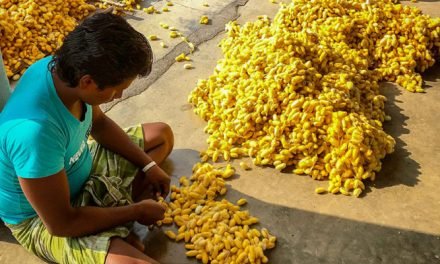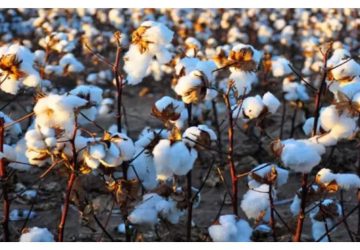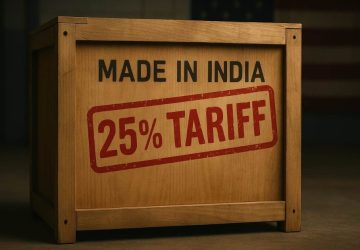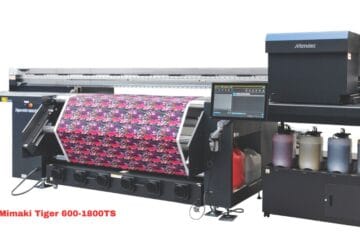 From digital garment printing to biotechnologies in textiles, smart technology is now playing an increasing role in China’s fashion industry as the country’s brands expand into global markets. Increasingly, textile companies in Dalian, a prominent city for clothing manufacturing and trade in northeast China, are boosting their digital transition based on 5G, industrial internet and AI innovations. Such trends are guiding the future of the textile and apparel industry in China. With digital technologies, a new custom-made suit can be ready for shipping in just 72 hours from the moment of receiving the order.
From digital garment printing to biotechnologies in textiles, smart technology is now playing an increasing role in China’s fashion industry as the country’s brands expand into global markets. Increasingly, textile companies in Dalian, a prominent city for clothing manufacturing and trade in northeast China, are boosting their digital transition based on 5G, industrial internet and AI innovations. Such trends are guiding the future of the textile and apparel industry in China. With digital technologies, a new custom-made suit can be ready for shipping in just 72 hours from the moment of receiving the order.
“Normally, it requires over 300 procedures and collaboration from over 10 departments for production, and it can take more than two weeks to make a suit. Now, the digital technologies have transformed the way clothing is manufactured in our workshop,” said Wang Gang, Assistant Manager of Dalian Moda Fashion.
“Growing bigger” is no longer a priority for China’s textile and apparel sector. Instead, the country intends to develop a high-tech-driven industry and engage in more value-added functions in the supply chain.
“During a market slowdown, textile companies have to reassess the core competitive elements of their products, such as the fine handmade workmanship or the technological tools that boost consumption. In other words, to identify the weakest links in your business,” said Hu Dongmei, CEO of Dalian Dayang Group, one of the most competitive men’s suit enterprises in China.
During the China International Garment and Textile Fair this month in Dalian, exhibitors showed how traditional labor-intensive assembly lines are giving way to robotic sewing, computerized cutting, and digital printing. Meanwhile, green fashion is becoming mainstream as more Chinese brands put their fall-winter collection made with eco-friendly materials on the racks.
“Like this leather jacket that we’ve exported to the European market, the fabric, the lining, even the zippers all comply with EU regulations. We’ve been working with our raw material suppliers for more than 10 years in order to bring the solutions of matching those requirements for entering foreign markets,” said Cherry Wu, CEO of Dalian Longsheng Fashion, a fashion supplier.
China’s textile and apparel exports reached over 115 billion U.S. dollars from January to May this year, a 1.4-percent increase over the same period last year, according to customs data.
As challenges remain amid trade protectionism and rising competition from Southeast Asia, experts suggest that Chinese textile companies need to target new markets by focusing on innovation, developing high-end, smart, and sustainable products.
 From digital garment printing to biotechnologies in textiles, smart technology is now playing an increasing role in China’s fashion industry as the country’s brands expand into global markets. Increasingly, textile companies in Dalian, a prominent city for clothing manufacturing and trade in northeast China, are boosting their digital transition based on 5G, industrial internet and AI innovations. Such trends are guiding the future of the textile and apparel industry in China. With digital technologies, a new custom-made suit can be ready for shipping in just 72 hours from the moment of receiving the order.
From digital garment printing to biotechnologies in textiles, smart technology is now playing an increasing role in China’s fashion industry as the country’s brands expand into global markets. Increasingly, textile companies in Dalian, a prominent city for clothing manufacturing and trade in northeast China, are boosting their digital transition based on 5G, industrial internet and AI innovations. Such trends are guiding the future of the textile and apparel industry in China. With digital technologies, a new custom-made suit can be ready for shipping in just 72 hours from the moment of receiving the order.




















